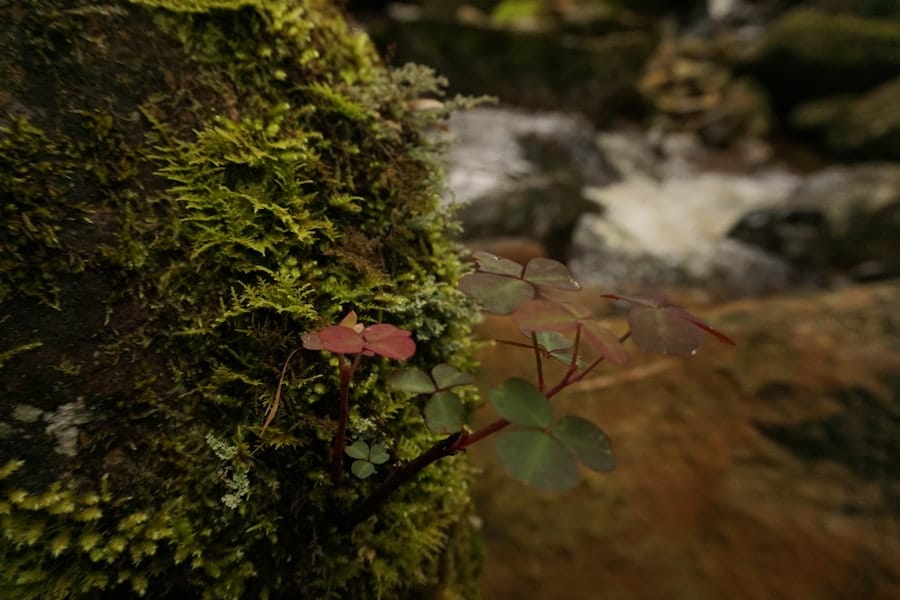In an era where technology permeates every aspect of our lives, the intersection of digital innovation and the natural world has given rise to a new paradigm of exploration and appreciation. Tech-augmented nature experiences leverage advancements in virtual reality (VR), augmented reality (AR), and mobile applications to enhance our interactions with the environment. These technologies not only provide immersive experiences that can transport users to remote landscapes but also facilitate a deeper understanding of ecological systems and wildlife.
As urbanization continues to encroach upon natural habitats, tech-augmented experiences offer a unique solution to bridge the gap between people and nature, fostering a sense of connection that may otherwise be lost. The integration of technology into nature experiences is not merely about entertainment; it serves educational purposes, promotes conservation efforts, and encourages outdoor activities. By utilizing VR and AR, individuals can explore ecosystems that are geographically distant or otherwise inaccessible, all from the comfort of their homes.
This democratization of nature exploration allows for a broader audience to engage with the environment, potentially inspiring a new generation of environmental stewards. As we delve deeper into the various facets of tech-augmented nature experiences, it becomes evident that these innovations hold the potential to reshape our relationship with the natural world.
Key Takeaways
- Tech-augmented nature experiences combine technology with outdoor activities to enhance the exploration of natural environments.
- Virtual reality allows users to immerse themselves in simulated natural environments, providing a unique and educational experience.
- Augmented reality can be used to educate people about wildlife and their habitats, offering interactive and engaging learning opportunities.
- Technology can enhance outdoor activities such as hiking and birdwatching by providing tools for navigation, identification, and information.
- While technology can have a positive impact on nature conservation through data collection and monitoring, ethical considerations and challenges must be addressed to ensure a balanced approach.
The Role of Virtual Reality in Nature Exploration
Virtual reality has emerged as a powerful tool for immersing users in lifelike environments that replicate the sights and sounds of nature. Through VR headsets, individuals can embark on virtual hikes through dense forests, traverse arid deserts, or dive into vibrant coral reefs without ever leaving their living rooms. This immersive experience can be particularly beneficial for those who may have physical limitations or live in urban areas where access to natural landscapes is limited.
For instance, programs like “The Wild Immersion” offer users the chance to experience wildlife in their natural habitats, providing a sense of presence that traditional media cannot replicate. Moreover, VR can serve as an educational platform, allowing users to learn about ecosystems and biodiversity in an engaging manner. For example, educational institutions have begun incorporating VR into their curricula to teach students about environmental science.
By simulating real-world scenarios, such as climate change impacts on polar ice caps or deforestation in the Amazon rainforest, students can visualize complex concepts and understand the urgency of conservation efforts. This experiential learning approach not only enhances knowledge retention but also fosters empathy towards the environment, encouraging students to become advocates for sustainability.
Augmented Reality and Wildlife Education

Augmented reality takes the concept of immersive experiences a step further by overlaying digital information onto the real world. This technology has found a significant application in wildlife education, where users can interact with virtual animals and learn about their behaviors, habitats, and conservation status in real-time. For instance, applications like “Seek by iNaturalist” allow users to identify plants and animals by simply pointing their smartphones at them.
This interactive learning experience not only enriches outdoor excursions but also empowers individuals to contribute to citizen science initiatives by documenting biodiversity. In addition to identification, AR can enhance wildlife education through gamification. Programs that incorporate challenges or quests encourage users to explore their surroundings while learning about local flora and fauna.
For example, “Zooniverse” offers projects where users can classify animal behaviors from camera trap footage, turning wildlife observation into an engaging activity. By making learning fun and interactive, AR fosters a deeper appreciation for biodiversity and encourages individuals to take an active role in conservation efforts.
Enhancing Outdoor Activities with Technology
The integration of technology into outdoor activities has transformed how individuals engage with nature. Mobile applications designed for hiking, biking, or birdwatching provide users with real-time information about trails, weather conditions, and wildlife sightings. For instance, apps like “AllTrails” offer detailed maps and user-generated reviews of hiking trails, enabling adventurers to choose routes that match their skill levels and interests.
This accessibility not only enhances safety but also encourages more people to explore the outdoors.
These devices can track metrics such as heart rate, distance traveled, and elevation gain, providing valuable feedback for outdoor enthusiasts looking to improve their fitness levels.
Additionally, some wearables are equipped with GPS capabilities that help users navigate unfamiliar terrains, ensuring they remain oriented during their adventures. By combining physical activity with technology, individuals are more likely to engage in outdoor pursuits that promote health and well-being.
The Impact of Technology on Nature Conservation
The role of technology in nature conservation cannot be overstated. Tech-augmented experiences not only raise awareness about environmental issues but also facilitate data collection and monitoring efforts crucial for conservation initiatives. Drones equipped with cameras are increasingly being used to survey wildlife populations and monitor habitat changes in real-time.
For example, researchers have employed drones to track elephant herds in Africa, gathering data on their movements and interactions without disturbing their natural behaviors. Moreover, technology has enabled the development of sophisticated modeling tools that predict the impacts of climate change on ecosystems.
Citizen science platforms also play a pivotal role in conservation efforts by engaging the public in data collection. Apps like “eBird” encourage birdwatchers to report their sightings, contributing valuable information to ornithological research and helping track migratory patterns over time.
Challenges and Ethical Considerations in Tech-Augmented Nature Experiences

Despite the numerous benefits associated with tech-augmented nature experiences, several challenges and ethical considerations must be addressed. One significant concern is the potential for technology to detract from genuine connections with nature. As individuals become increasingly reliant on digital devices for exploration, there is a risk that they may overlook the intrinsic value of direct experiences in natural settings.
This phenomenon raises questions about whether technology enhances or diminishes our appreciation for the environment. Additionally, there are ethical implications surrounding data privacy and surveillance in conservation efforts. The use of drones and other monitoring technologies raises concerns about the potential for invasive practices that could disrupt wildlife or infringe upon the rights of local communities.
Striking a balance between technological advancement and ethical responsibility is crucial to ensure that conservation efforts do not come at the expense of ecological integrity or social equity.
The Future of Tech-Augmented Nature Experiences
Looking ahead, the future of tech-augmented nature experiences appears promising yet complex. As technology continues to evolve, we can expect even more sophisticated tools that enhance our understanding of the natural world. Innovations such as artificial intelligence could play a pivotal role in analyzing ecological data and predicting environmental changes with greater accuracy.
Furthermore, advancements in haptic feedback technology may allow users to experience tactile sensations associated with different environments, creating an even more immersive experience. However, as we embrace these advancements, it is essential to remain mindful of the potential pitfalls associated with increased reliance on technology. The challenge will be to cultivate a harmonious relationship between digital innovation and nature appreciation.
Educational initiatives that emphasize responsible technology use in outdoor settings will be vital in fostering a generation that values both technological progress and environmental stewardship.
Balancing Technology and Nature in the Digital Age
In navigating the complexities of tech-augmented nature experiences, it is imperative to strike a balance between embracing technological advancements and nurturing our connection with the natural world. While virtual reality and augmented reality offer unprecedented opportunities for exploration and education, they should complement rather than replace direct interactions with nature. By fostering a culture that values both technological innovation and environmental conservation, we can ensure that future generations inherit a world where technology enhances rather than detracts from our appreciation of the beauty and complexity of nature.
As we move forward in this digital age, it is our responsibility to cultivate a sustainable relationship with both technology and the environment for the benefit of all living beings on this planet.
In exploring the intersection of technology and nature, “The Future of Tech-Augmented Nature Experiences” delves into how modern innovations are enhancing our interactions with the natural world. A related article that complements this discussion is “Which Smartwatches Allow You to View Pictures on Them?” available at

